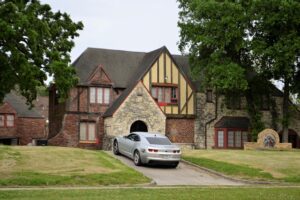Introduction
When it comes to refrigerators, one of the most common questions people have is how long it takes for them to get cold. The answer to this question can vary depending on various factors, such as the initial temperature of the refrigerator, the size of the refrigerator, and the surrounding temperature. In this article, we will dive deeper into this topic to provide a better understanding of how long it typically takes for a refrigerator to get cold.
Factors Affecting Refrigerator Cooling Time
There are several factors that can influence the time it takes for a refrigerator to get cold. Let’s take a closer look at each of these factors:
Initial Temperature: If you have just plugged in a new refrigerator or turned on an old one after a long period of being off, it will take longer to get cold compared to a refrigerator that has been running consistently. This is because the initial temperature inside the refrigerator is higher, and it needs to work harder to reach the desired cooling temperature.
Size of the Refrigerator: The size of the refrigerator also plays a role in the cooling time. Larger refrigerators generally take longer to cool down compared to smaller ones. This is because there is a larger volume of air and food items that need to be cooled inside a larger refrigerator.
Surrounding Temperature: The temperature of the room where the refrigerator is located can impact its cooling time. If the room is hot, it will take longer for the refrigerator to cool down as it needs to work against the higher ambient temperature. On the other hand, if the room is already cool, the refrigerator will cool down faster.
Refrigerator Settings: The temperature settings of the refrigerator also affect its cooling time. If the temperature is set to a lower value, the refrigerator will take longer to reach that temperature. It is important to note that setting the temperature too low can lead to excessive energy consumption.
Typical Cooling Time
While the exact cooling time can vary based on the factors mentioned above, it generally takes around 24 hours for a refrigerator to reach its optimal cooling temperature. During this time, the refrigerator gradually cools down the air and food items inside to the desired temperature.
It is important to note that opening the refrigerator frequently during this initial cooling period can prolong the time it takes for the refrigerator to get cold. Each time the refrigerator door is opened, warm air from the room enters, and the refrigerator needs to work harder to cool it down again.
Efficiency Tips
If you want to minimize the cooling time and improve the efficiency of your refrigerator, here are a few tips to consider:
Pre-cool Items: If you are placing warm or hot food items in the refrigerator, it can increase the cooling time. It is advisable to let the food items cool down to room temperature before placing them in the refrigerator.
Avoid Overloading: Overloading the refrigerator with a large number of food items can hinder the airflow and reduce the cooling efficiency. It is recommended to leave some space between the items for proper air circulation.
Keep the Door Closed: As mentioned earlier, opening the refrigerator frequently can prolong the cooling time. It is important to minimize the number of times you open the refrigerator door, especially during the initial cooling period.
Conclusion
In conclusion, the time it takes for a refrigerator to get cold can vary depending on factors such as the initial temperature, size of the refrigerator, surrounding temperature, and refrigerator settings. On average, it takes around 24 hours for a refrigerator to reach its optimal cooling temperature. By following efficiency tips such as pre-cooling items, avoiding overloading, and keeping the door closed, you can minimize the cooling time and improve the efficiency of your refrigerator.
References
– www.energy.gov
– www.consumerreports.org
– www.thespruce.com












